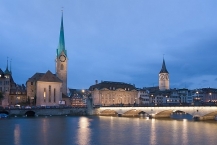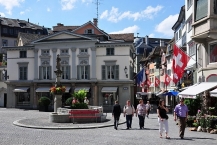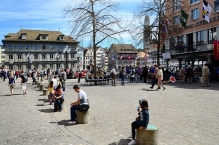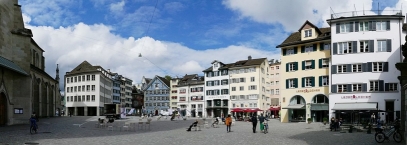Cycle Tour Rhine Tour
Planned tour: From Zurich to North See
Actions
![]()
Please wait - map data are loading
Added on 03 Feb 2020,
last edited by agocurti on 22 Feb 2024
Actions
Cycle route metrics
planned
ridden
Total distance in km
1.072
0
Cumulative elevation gain in m
2.636
0
Avg. slope uphill in %
0,25
-
Cumulative elevation loss in m
2.980
0
Information about rights to the gps-track data | |
|---|---|
Rights owner | |
Rights characteristic / license | cc0: Public Domain no Rights reserved |
Link to the description of the license | |
GPX file uploaded | by agocurti on 22 Mar 2020
|
Track points in total
15.513
0
Track points per km (avg)
14
0
Start/endpoint
Start location
Zürich, Zürich, CH (408 m NHN)
End location
Rotterdam, South Holland, NL (64 m NHN)
Beds4Cyclists, worth visiting and infrastructure
Name and address
Latitude / Longitude
Phone
Fax
Mobile
Type of accommodation
Rating for cyclists
Route km
Dist. to route
Elevation
0 km
2,3 km
434 m
0 km
2,2 km
421 m
0 km
0,6 km
424 m
Information about copyright | |
|---|---|
Rights owner | |
Rights characteristic / license | by-sa: CREATIVE COMMONS Attribution-ShareAlike |
Link to the description of the license | |
Image taken over from | https://commons.wikimedia.org/wiki/File:Zuerich_Fraumuenster_St_Peter.jpg |
Image has been uploaded | by biroto-Redaktion on 14 Dec 2021
|
Information about copyright | |
|---|---|
Rights owner | |
Rights characteristic / license | by-sa: CREATIVE COMMONS Attribution-ShareAlike |
Link to the description of the license | |
Image taken over from | https://commons.wikimedia.org/wiki/File:Zürich_-_Münzplatz_IMG_2051.JPG |
Image has been uploaded | by biroto-Redaktion on 14 Dec 2021
|
Information about copyright | |
|---|---|
Rights owner | |
Rights characteristic / license | by-sa: CREATIVE COMMONS Attribution-ShareAlike |
Link to the description of the license | |
Image taken over from | https://commons.wikimedia.org/wiki/File:Rathaus_-_Haue-Rüden_-_Weinplatz_2013-04-15_13-58-13.JPG |
Image has been uploaded | by biroto-Redaktion on 14 Dec 2021
|
Information about copyright | |
|---|---|
Rights owner | |
Rights characteristic / license | by-sa: CREATIVE COMMONS Attribution-ShareAlike |
Link to the description of the license | |
Image taken over from | |
Image has been uploaded | by biroto-Redaktion on 14 Dec 2021
|
Zurich (German: Zürich, Swiss German: Züri) is the largest city in Switzerland, with a population of some 435,000 (2018) in the city, and 1.3 million (2009) in the metro area. Zurich is on Lake Zurich, where the lake meets the river Limmat, in the north of Switzerland.
Understand
Zurich is Switzerland's biggest city and a cultural center of German-speaking Switzerland. Despite it not being the administrative capital of any more than its Kanton, Zurich punches well above its weight in terms of major media and business headquarters and due to it being at the heart of Switzerland's excessively punctual and meticulously maintained train network and being home to Switzerland's most important airport, it is often the first part of Switzerland that visitors get to see.
While Zurich can be expensive, it is also clean, efficient and blessed with a high standard of living, which together with the high wages, explains why people bear with the high prices. Zurich has drawn people from the rest of Switzerland for centuries, but in the 20th and 21st century it has also begun to draw both people and companies from outside Switzerland and in some cases even outside Europe. This means that you will hear a lot more languages than just Swiss German and the overall atmosphere is a lot more cosmopolitan than you might think.
History
The city's Latin name, Turicum, was used for a Roman customs station at the Limmat, which has some remnants today. The Alemanni, a Germanic tribe, settled in the 5th century.
While the Church used to rule early Medieval Zurich, the Guilds (Zünfte) took power in 1336, establishing Zurich as an autonomous republic. The Guilds have survived until today, though their role today is mostly ceremonial. Zurich became the fifth canton of the Swiss Confederacy in 1351, and has been its capital at times. However, Switzerland's famous neutrality and stability is a modern thing, as many battles have been fought in and around Zurich. The canton lost the Old Zürich War between 1440 and 1446 against the confederacy, and was re-admitted in 1450.
Ulrich Zwingli led the Protestant Reformation in Switzerland during the early 16th century. As the Thirty Years War ended in 1648, the Holy Roman Empire lost its grip on Switzerland, which has mostly been independent since then.
The 1830s and 40s saw a series of revolts and war, including the Züriputsch, a revolt of conservative landowners of the canton, against the city of Zurich, and the 1847 Sonderbund War. In 1848 Switzerland adopted a constitution, which established the country as a federal republic. While the government settled in Bern, many federal institutions, including the new Polytechnic University (ETH) have their seat in Zurich.
The Zurich Stock Exchange was founded in 1877, and the city rose as a financial centre in the 20th century, as Switzerland remained neutral in the World Wars, and could maintain lower taxes on capital than the European great powers. Even though Switzerland has opted out of NATO and the European Union, Zurich is today one of central Europe's most cosmopolitan cities.
See
Most of the interesting sights are in the old town around the river and lakefront.
- ⊙Bahnhofstrasse. One of the busiest and best-known shopping streets in the world. Highly refined. Certainly a must-see for every tourist in Zurich!
- ⊙Lindenhof. The hill in the heart of the old town. A beautiful view of the city and one time location of a Roman
 fort.
fort. - ⊙Lake Promenade (Utoquai, Seefeldquai). Especially during summer, the lake is a beautiful place to spend the evening or the weekend. Starting from Bellevue, the boardwalk goes for about three kilometers along the lake towards Tiefenbrunnen. About halfway from Bellevue there is a meadow where you will find thousands of people on a sunny day.
- ⊙Grossmünster, Zwingliplatz. November-February 10ː00-17ː00, March-October 10ː00-18ː00.
Old Romanesque church, symbol of reformed Zurich, where reformer Huldrych Zwingli was appointed the people's priest in 1519. Go up the tower for a great view of Zurich, though the stairs can be quite small and steep.
Tower Fr. 4, Fr. 2 for students.(updated May 2017)
- ⊙Fraumünster, Kämbelgasse 2. November-February 10:00-17:00, March-October 10:00-18:00.
Old Gothic church (former convent) with window paintings made by Marc Chagall.
No photos or videos allowed inside. Fr. 5.(updated May 2017)
- ⊙Schanzengraben. A small canal that used to be part of the city fortifications between Limmat and Sihl. From the main station, go to Gessnerallee, find the stairways down to the tiny creek, and walk all the way to the lake.
- ⊙Langstrasse. Red light district of Zurich, with more drug dealers and police than usual, but interesting because even this most notorious spot in Switzerland is so clean and safe. The area is the most overtly multicultural spot of the town. Ateliers and stylish bars sit side by side the strip clubs.
- ⊙China Garden, Bellerivestrasse 138, ☎ +41 44 380 3151. Apr-Oct daily 11:00–19:00.
This small but beautiful Chinese garden was offered to the city of Zurich by the Chinese city of Kunming as symbol of gratitude after Zurich helped Kunming with technical knowledge.
Fr. 4.(updated Jul 2017)
- ⊙Niederdorf. The old town offers beautiful alleys, restaurants and shopping mainly aimed at younger consumers. In the evenings, people visit the Niederdorf's many bars.
- ⊙Landesmuseum (National Museum), Museumstrasse 2, ☎ +41 44 218 6511. Tu-Su 10:00–17:00 and most public holidays including M, Th until 19ː00.
This is the place to go if you want to learn more about the history of Switzerland. There are permanent exhibitions on history, archaeology and art. Changing temporary exhibitions usually also turn around Swiss topics.
Fr. 10/8.(updated Jul 2017)
- ⊙Kunsthaus, Heimplatz 1, ☎ +41 44 253 8484. Tu, F-Su 10ː00-18ː00, W-Th 10ː00-18ː00.
Zurich's most famous art museum. The collection includes works from many Swiss artists, such as the sculptures of Alberto Giacometti or the paintings of Ferdinand Hodler. There are also major works from international artists on display. The museum is building a new extension, scheduled to open in 2020 and thus parts of the museum might be closed at any given time.
Fr. 16/11 for the permanent collection. Free on Wednesdays.(updated Jul 2017)
- ⊙Johann Jacobs Museum, Seefeldquai 17, ☎ +41 44 388 6190. Tu 16ː00-20ː00, Sa Su 11ː00-17ː00.
A museum that describes the complex history of global trade routes and goods and the culture around them.
Fr. 7. (updated May 2017) - ⊙Pavillon Le Corbusier, Höschgasse 8 (near China Garden), ☎ +41 44 383 6470. W, F-Su 12:00-18:00, Th 12:00-20:00.
This is the last building designed by the Swiss architect le Corbusier. The Pavillon was built after his death as a museum dedicated to his work. Access to the building has long been difficult and expensive, also due to a legal fight between the former patron and initiator of the building and the city of Zurich. Now it is however managed by the city and open to the public. The highlight of the museum is of course the building itself, but there are also yearly changing exhibitions on architecture.
Fr. 12/8.(updated Jul 2017)
- ⊙Rietberg Museum, Gablerstrasse 15 (Tram 7 for Wollishofen, alight at ‘Museum Rietberg’ stop; five-minute walk to museum S-Bahn to Enge station; ten-minute walk to museum Bus 72 for Morgental, alight at ‘Hügelstrasse’ stop; six-minute walk to museum), ☎ +41 44 415 3131.
This is one of the largest art museums in Switzerland, administered by the City of Zurich. Its focus lies on the traditional and contemporary arts and cultures of Asia, Africa, the Americas, and Oceania. The complex consists of three nineteenth-century villas and a coach house, as well as a twenty-first century underground extension crowned by the Emerald, a glass pavilion that opened in 2007, designed by architects Alfred Grazioli and Adolf Krischanitz. (updated Jun 2019) - ⊙Zoological Museum, Karl Schmid-Strasse 4, ☎ +41 44 634 3838. Tu-F 09ː00-17ː00, Sa-Su 10ː00-17ː00.
Showcases the zoological collection of the university of Zurich. The first floor has local fauna whereas the lower floor has animals from all over the world.
Free.(updated May 2017)
- ⊙FIFA World Football Museum, Seestrasse 27, ☎ +41 43 388 2500.Tu-Sa 10:00-19:00, Su 09:00-18:00.
Explores the world of football and the FIFA.
Fr. 24/14.(updated Jun 2017)
- ⊙Villa Patumbah (Heimatschutzzentrum), Zollikerstrasse 128 (T2 to Höschgasse, then a 650m walk), ☎ +41 44 254 5790.W F Sa 14:00-17:00; Th Su 12:00-17:00.
Stunning 19th century villa, which houses an architectural history museum (Heimatschutzzentrum).
Fr. 10. (updated Jun 2019)
Information about copyright | |
|---|---|
Rights characteristic / license | by-sa: CREATIVE COMMONS Attribution-ShareAlike |
Link to the description of the license | |
Input taken over from: |
Wikivoyage contributors, 'Zurich', Wikivoyage, The FREE worldwide travel guide that anyone can edit, 3 December 2021, 12:28 UTC, https://en.wikivoyage.org/w/index.php?title=Zurich&oldid=4338702 |
taken over / edited on | 14 Dec 2021 - 17 Feb 2024
|
taken over / edited by |
|
0 km
0,2 km
426 m
0 km
4,0 km
518 m
![]()




